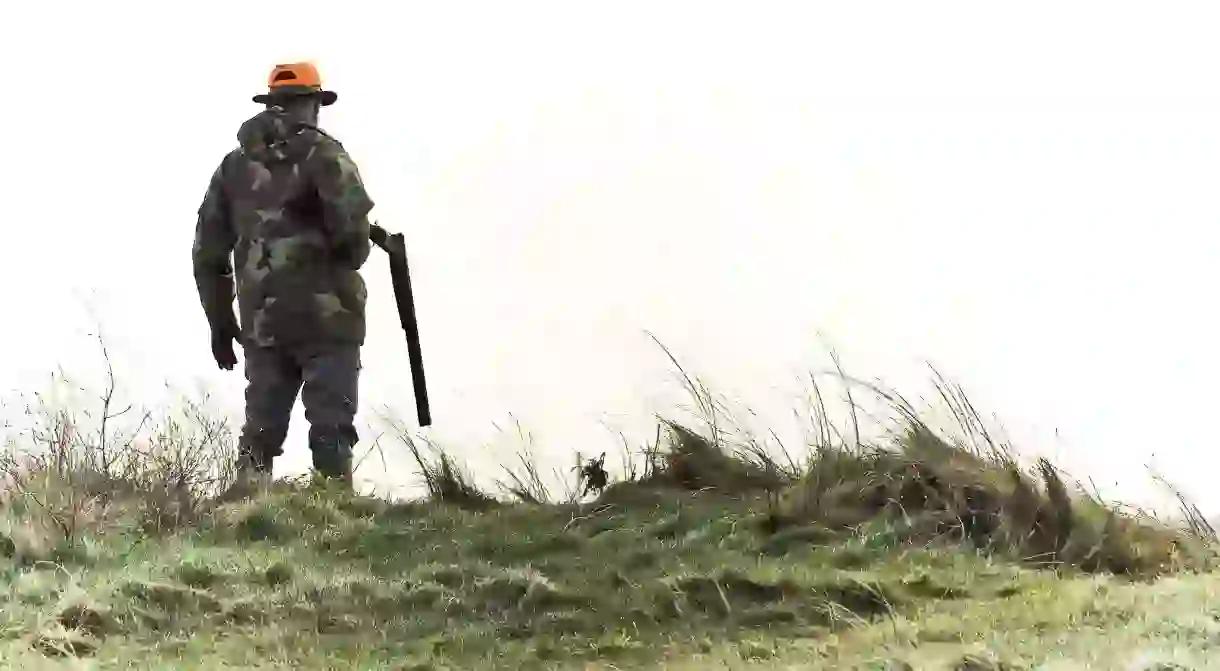The French Love Affair With Hunting

Wind whistling through bare treetops, icy water tinkling along stony brooks, and the almighty clash of double-barreled shotguns taking out the cast members of Bambi – this is the soundtrack of a winter’s stroll in the French countryside. France’s 1.2 million licensed hunters (98% of whom are men) make stalking the nation’s third favorite leisure activity and no other European country loves it more.
Traditionally, the hunting season starts on a Sunday in September and ends in February. In 2016, the residents of Moselle, Bas-Rhin, and Haut-Rhin, the three north-eastern departments on the German border, were the first to get their guns out on August 23rd. Corsica and the southern half of the mainland, where hunting is most popular, came next on September 4th and 11th, respectively, and the rest of the country’s departments followed over the next two weekends.

As enthusiastic as many locals are about hunting, not just anybody can pick up a gun and head into the fields and forests for a day of bullets and bloodshed. French law demands a permit, or permis de chasser, costing between €17 for a three-day license and €223.64 for an annual pass.
Naturally, regulation also extends to what can be killed and when. There are 89 species on the official kill list and 39 of these are waterfowl. Most hunters set out in small groups with dogs and track deer, hares, rabbits, wild boar, or partridge and pheasant. Other huntable animals include crows, mallards, turtle doves, weasels, badgers, and foxes.

Unfortunately, and unsurprisingly, gun-related accidents in rural areas during the hunting season are numerous. Between 2015 and 2016, the Office National de la Chasse et de la Faune Sauvage recorded 146 incidents including 10 fatalities, eight of the victims being hunters and two passers-by. The death toll is set to be even higher for this current season. In November, two men were killed on the same weekend in Seine-Maritime and on the weekend before Christmas two men were killed within an hour of one another in different departments. Dog walkers have also complained to police about pets being attacked and even killed by packs of hunting dogs.

Tapping into concerns about safety, the Association pour la Protection des Animaux Sauvages (ASPAS) has long been campaigning for a ban on Sunday hunting. In an interview with The Local, the head of the organization, Pierre Athanaze, stated that ‘France is the only country in Europe where people can hunt every day, which is why we are the country in Europe with the most accidents’. An ASPAS petition with more than 300,000 signatories, addressed to President François Hollande and suggesting that 2% of the population effectively hijack the countryside for nine months of the year, has led to a trial ban in parts of Haute-Savoie in eastern France. An app has also been launched in the department to help increase people’s security.
A recent Ifop survey carried out on behalf of ASPAS found that 78% of French people support a nationwide one-day ban, up from 54% in 2008. What’s more, 91% were in favor of some form of modernization of hunting laws.
Despite the dangers associated with the sport, it is a huge earner. In a study conducted by the strategic consulting firm BIPE, it was estimated that the French hunting industry generates €3.9 billion in sales every year and contributes €2.3 billion to the national GDP. It is also directly responsible for approximately 28,000 permanent rural jobs. Additionally, the management and development of suitable habitats and wildlife stocks necessitates a further 57,000 full-time employees.

For those unwilling to take the risk of a country walk in shooting season but nonetheless interested in the subject, a trip to the Musée de la Chasse et de la Nature in Paris is a must. The museum is housed in the Hôtel de Guénégaud, a 17th-century mansion, and its collections combine taxidermy with works of art on the theme of humankind’s relationship with nature.














